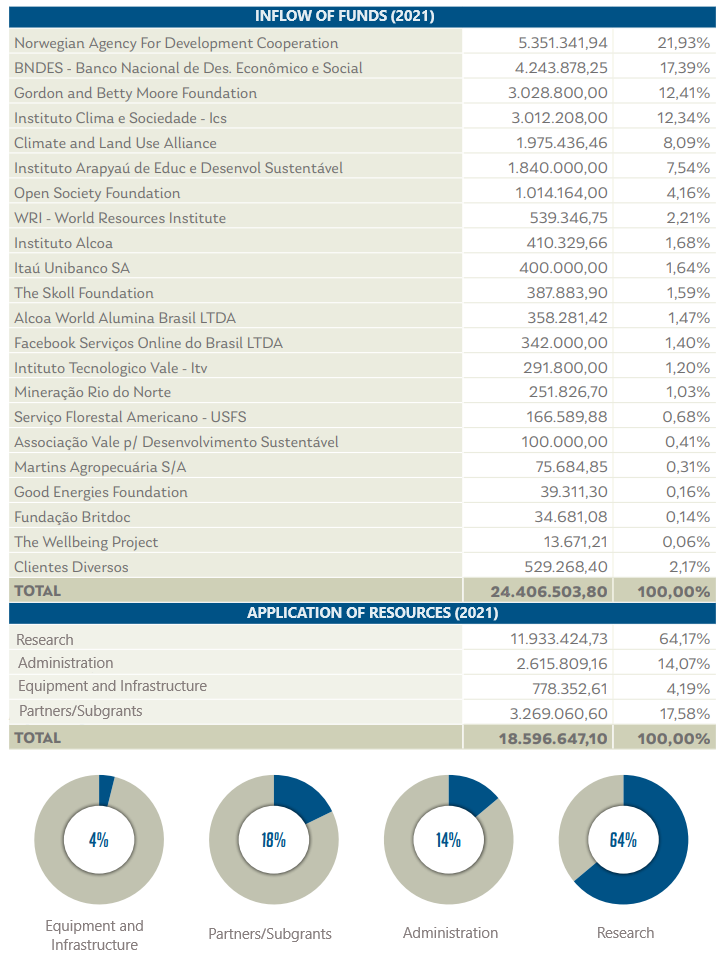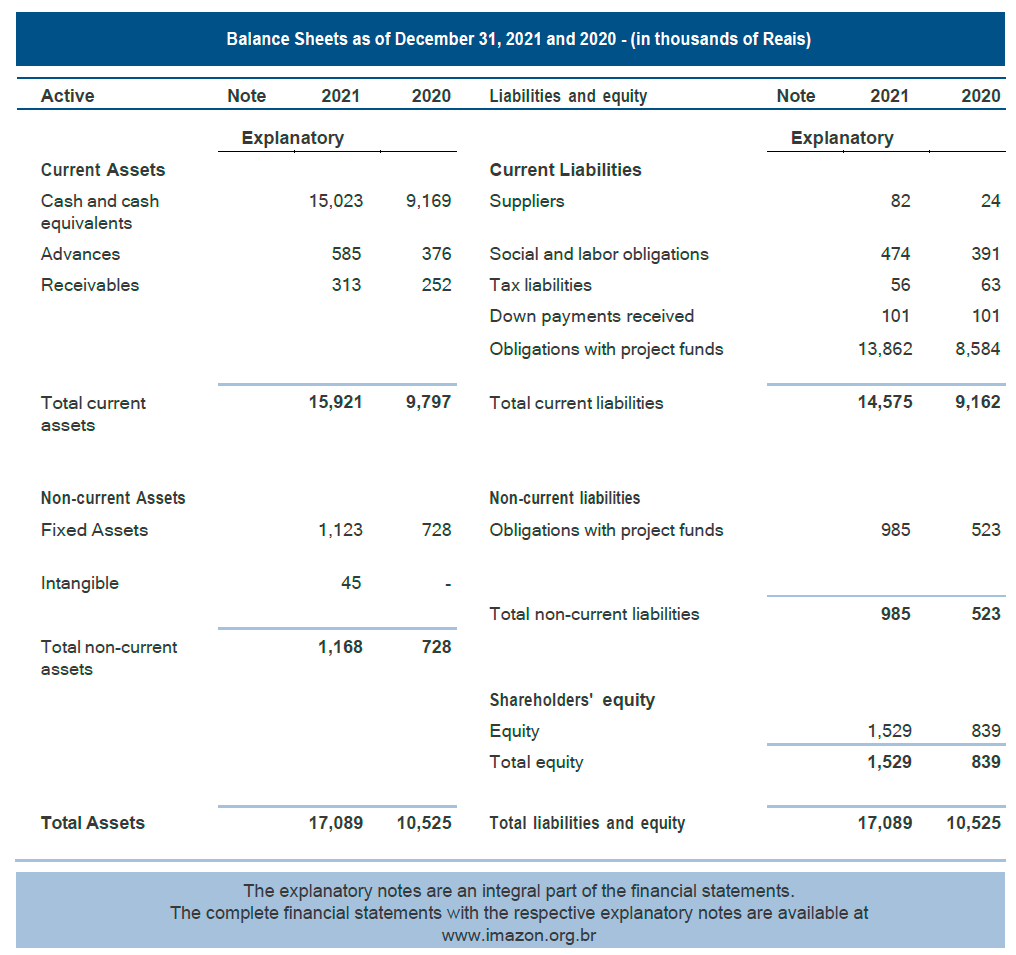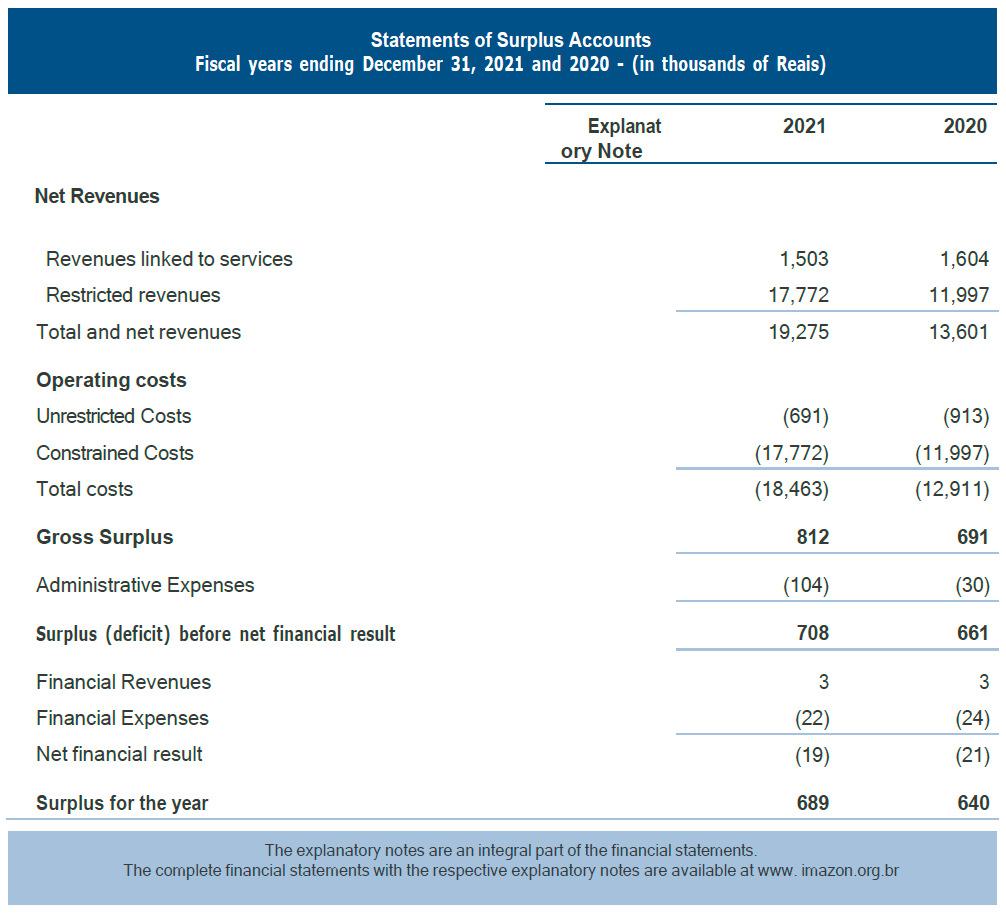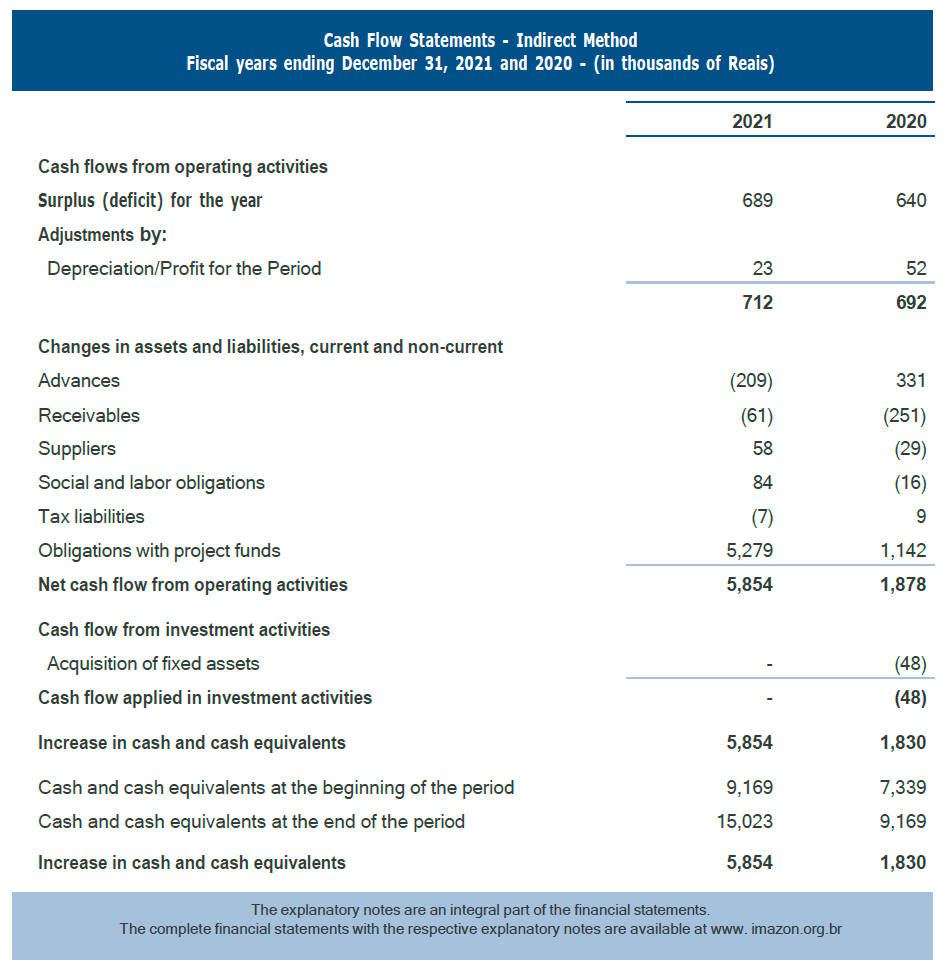

In 2021 the Amazon experienced its highest level of deforestation in the last 15 years. This was the same year in which the Intergovernmental Panel on Climate Change (IPCC) of the United Nations (UN) reiterated its ultimatum: either we reduce global greenhouse gas emissions or we will suffer extreme weather events with greater frequency and intensity. In Brazil, in 2021 alone, the National Confederation of Municipalities (CNM) noted that more than 40 million people were affected by heavy rains.
And we feel in our pockets the increase in the price of electricity because of the lack of water in the reservoirs of the hydroelectric power plants. As well as the rise in the cost of food after droughts caused crop failures in important agricultural commodities like soy, corn and coffee. Of course, these were not just consequences of the increase in deforestation in the Amazon, but the scientific literature has shown us that forest loss has a major impact on this climate imbalance. And it was within this context that the work of over three decades for the conservation and sustainable development of the region carried out by the Institute of People and Environment of the Amazon (Imazon) gained even more relevance in 2021. This is because we have reinforced our work both in scientific production and in carrying out field projects to protect, monitor and restore the Amazon.
For conservation purposes we went in loco in the largest block of protected areas in the world, called Norte do Pará. There, we executed projects together with traditional peoples and communities, residents of the region, public agencies, and the Brazilian and international audience to make the region better known, valued, and developed in a sustainable manner. For the entire Brazilian Amazon, we continue to monitor and report on deforestation and forest degradation, the threat and pressure of forest clearing in protected areas, and changes in land use and land cover. And in 2021 we launched, through partnerships, three new regional monitors: logging, deforestation risk, and water surface. These analyses served to show how much the forest and the people who depend on it are under extreme stress and urgently need more effective protection measures.
We have also continued to monitor and promote solutions for the laws and practices of land title regularization and for cattle ranching in the Amazon and published new data and analyses on these issues in 2021. This information helped inform the evaluation of legislative projects, including through contributing to bar new rollbacks for protection, public policies and private sector actions. Additionally, we have published new data on secondary vegetation, showing the resilience of the Amazon and the region’s potential for forest restoration. Furthermore, we have gone to the field to recover felled areas with objective of generating income with the standing forest. These actions are aligned with the United Nations Decade on Ecosystem Restoration (2021- 2030).
In the face of all the adversity that 2021 represented for the Amazon, the research we produced showed that sustainability is urgent and presented the paths towards adopting it. Meanwhile, the projects we conducted began to put into practice the solutions proposed by the studies. And most importantly, we found echoes for this sustainable vision in the thousands of reports that cited our work and in the millions of people who connected with us through social networks.
For this reason, we thank everyone who has supported us in our work for a more conserved and socio-economically just and developed Amazonia. In the following pages, we will present these initiatives in more detail. The future of the Amazon needs to be one of hope. And each reader can help us achieved it. Enjoy your reading!
Ritaumaria Pereira
Executive Director
Verônica Oki
Managing Director

The Amazon Institute of People and the Environment (Imazon) is a Brazilian and Amazonian non-profit scientific institution conducting research and projects to promote the region’s socioenvironmental development and climate justice. Our purpose is to produce and apply solutions based on forest conservation to improve the quality of life not only for the Amazon population but also for the Brazilian and the world population.
In 32 years, Imazon has already published approximately 900 scientific works, including research — many of them in international journals —, books, booklets, infographics, guides, and maps. These productions support decision-making by public authorities, the private sector, and even third-sector organizations, besides bringing specialized knowledge about Amazon to society.

Mission
To promote conservation and sustainable development in the Amazon.
Vision
The Amazon is a region where biodiversity, forest cover, and associated environmental services will be conserved, and sustainable development will be achieved in order to guarantee decent living conditions for all the region’s inhabitants.
Values
1. SUSTAINABILITY
Solutions to problems of natural resource use must be based on the principles of sustainability — the capacity of an ecosystem to maintain ecological processes and functions, biological diversity, and productivity over time. This means respecting all life forms and the cycles of nature, valuing cultural diversity, strengthening sustainable local economies, considering the environmental and social costs involved in production processes, and promoting efforts for benefit sharing (sharing power in decision-making and sharing sustainably created goods and services).
2. ETHICS
Adopt a respectful relationship with all people and institutions; respect copyrights; respect professional codes of ethics; and combat racial, gender, religious, and social prejudices and inequalities.
3. USE OF THE SCIENTIFIC METHOD
Imazon conducts objective and unbiased analyses based on scientific methods proven in specialized literature.
4. EXCELLENCE IN QUALITY
Imazon’s work undergoes a rigorous process of internal quality control and external peer review. This reinforces the credibility and respect of the institute.


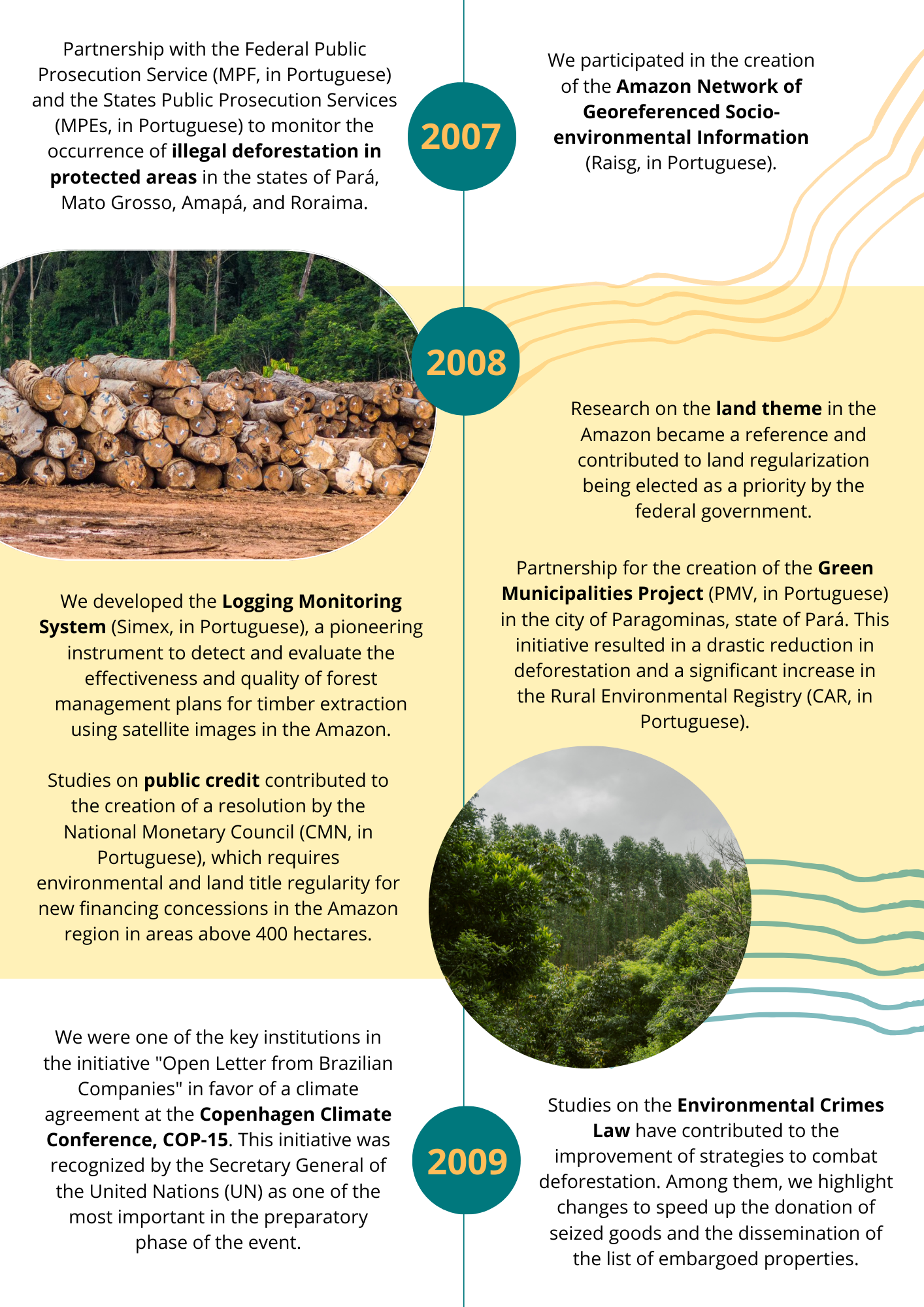
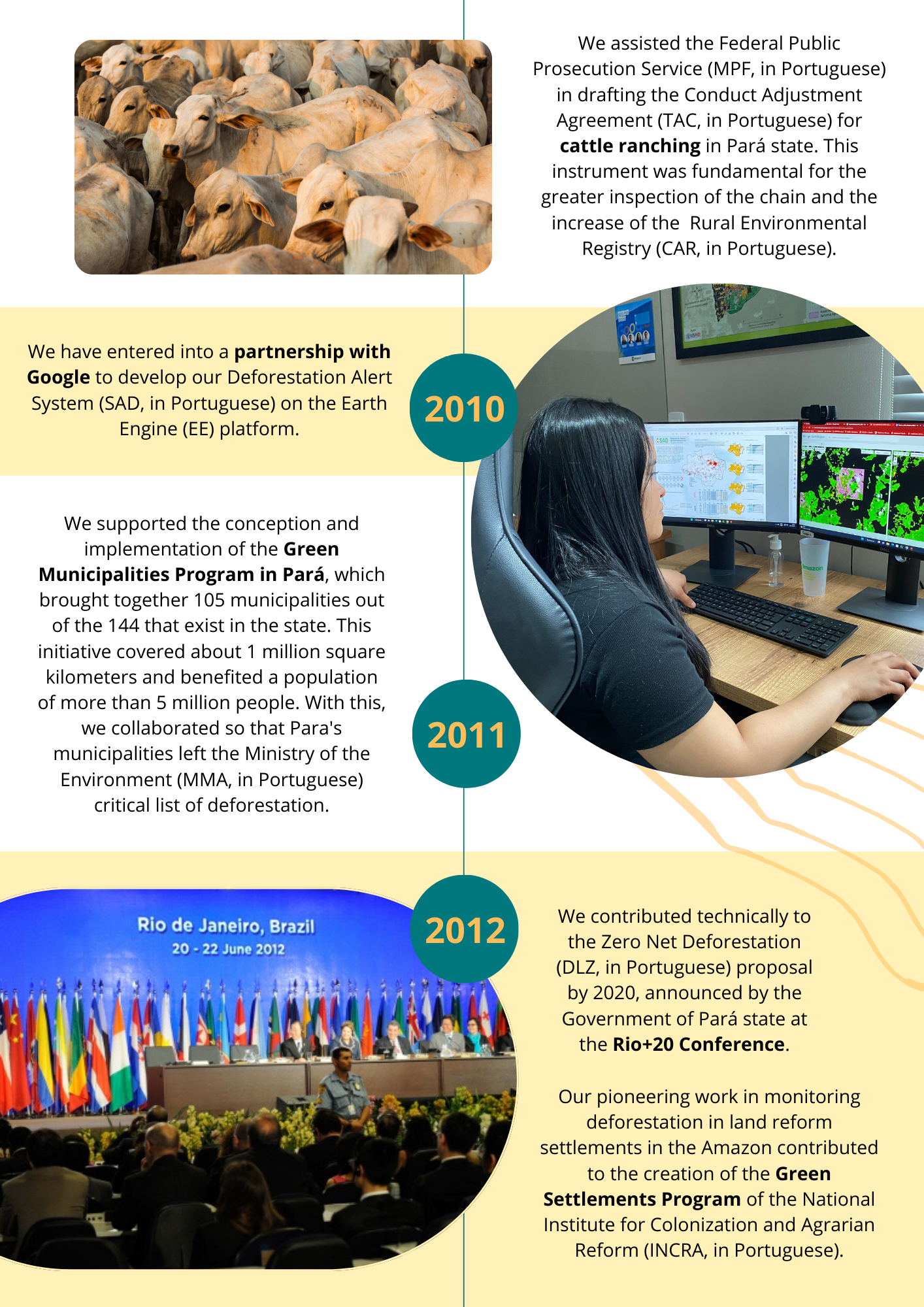
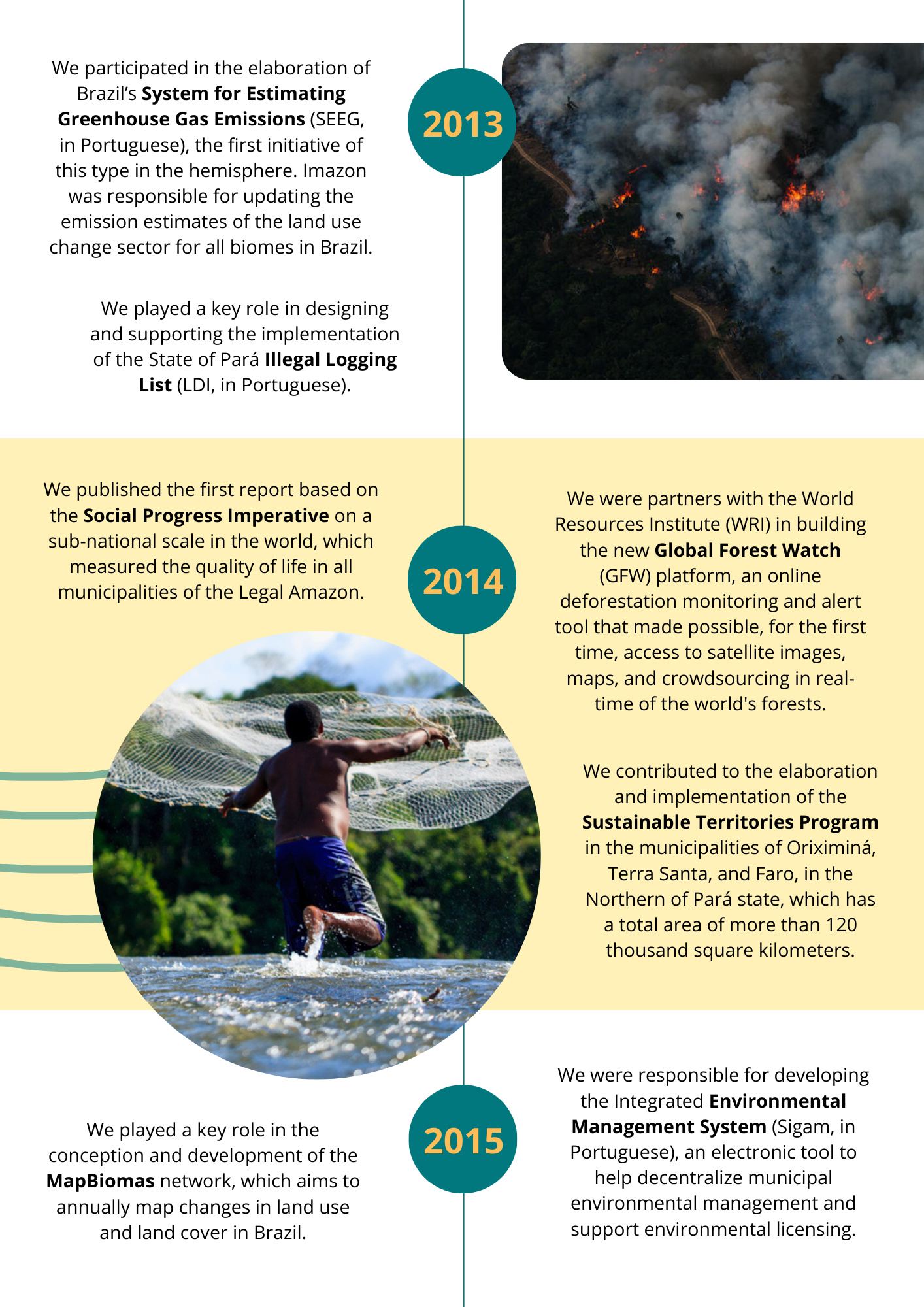
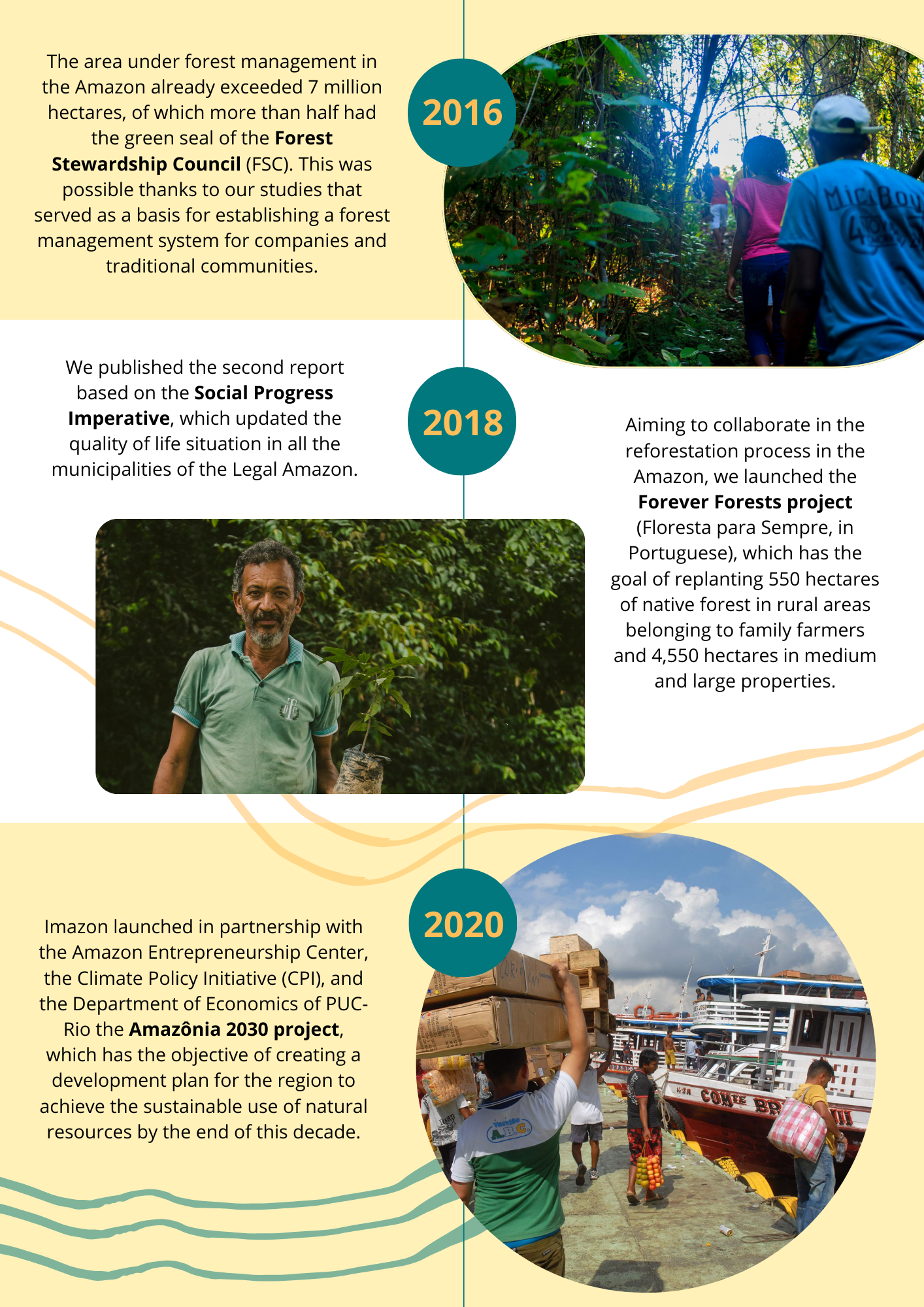
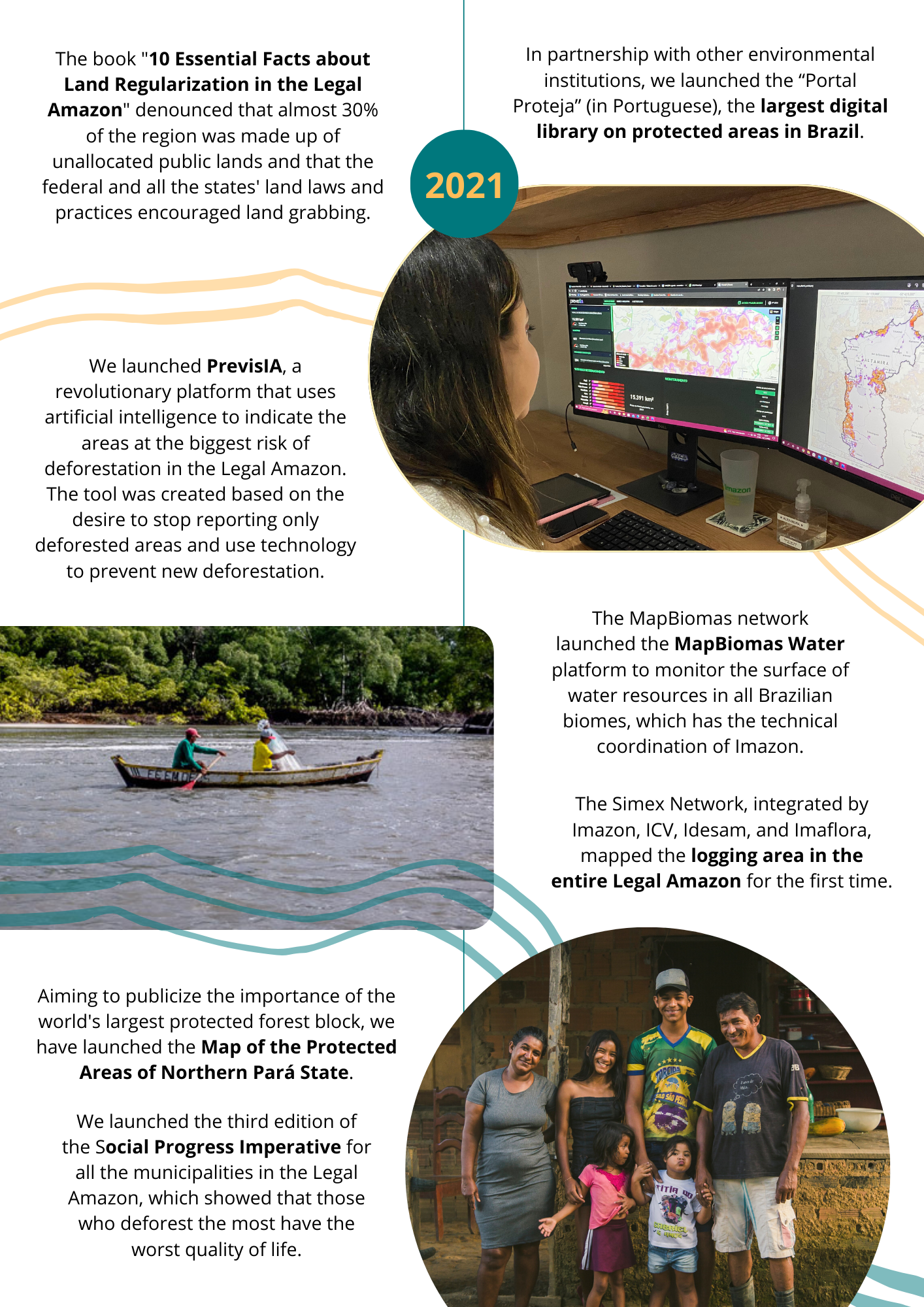

Imazon has so far received 17 awards and recognitions, which show the relevance of our work in protection and socio-environmental development for the Amazon.
2021
• We received the Amazon Forever Diploma, from the City Council of Belem.
• The PrevisIA deforestation prediction platform using artificial intelligence PrevisIA was recognized at the IT Media award as a case of Micro- soft, a partner of Imazon and Fundo Vale in the development of the tool.
2018
• We were chosen as the best NGO in the North Region and we were among the 100 best NGOs in Brazil in the Best NGOs Award 2018.
2017
• Representatives from Imazon and Mineração Rio do Norte received, during the 13th Pará State Industry Fair, in recognition for winning 1st place in the State Innovation Award in the Mining Industry with the Sustainable Territories Program.
2014
• Our co-founder Beto Veríssimo was on The Época Magazine list of the 100 most influential people in Brazil.
• Veríssimo was also recognized by O Globo newspaper as the most outstanding personality of the year in the Society – Sustainability category in the 12th edition of the Faz Diferença Award.
2012
• We were in the TOP3 of the Greenvana GreenBest 2012 award in the NGO category.
• We were recognized by the Municipality of Paragominas with the Mérito Célio Miranda Medal, the city’s most important award for those who have contributed to its development.
2011
• We took 1st place in the NGO category in the Greenbest Academy Prize for 2011.
• Our senior researcher Carlos Souza Jr. has been recognized by the International Biographical Centre as a member of the TOP 100 SCIENTISTS 2011 list (Top 100 Scientists 2011).
• Beto Veríssimo, co-founder of Imazon, was recognized by Alfa Magazine as one of the Men of the Year for his contributions in the fight against deforestation in the Amazon.
2010
• We won the Skoll Foundation Award for Social Entrepreneurship.
• Paragominas, in Pará, we took 1st place in in the Municipalities category of the Chico Men- Award – Ministry of Environment (MMA), thanks to the implementation of the Green City Project, conducted in partnership with Imazon.
2009
• We received the Marina Silva Merit from the city of Belém, through the Municipal Secretariat of Environment (Semma).
• We won the USAID Prize from the United States Agency for International Development (USAID).
2008
• We took 1st place in the Non-Governmental Organization category (NGO) of the Ministry of Environment (MMA) Chico Mendes Award.
2007
• We won the Henry Ford Environmental Conservation Award in the category of Science and Human Resources Training.

MONITORING THE AMAZON
The general objective of the program is to monitor, analyze, and publicize human pressures on the Amazon Forest, including deforestation, forest degradation, logging, and roads. To this end, it combines remote sensing, programming, and artificial intelligence technologies. Its results have informed the planning of public policies and private sector decision-making and have assisted in the engagement of institutions and society in protecting the Amazon.
SUSTAINABLE MUNICIPALITIES
Works to strengthen environmental management and support low carbon economies in Amazon municipalities. To this end, it conducts socio-environmental diagnoses, prepares geographic data, promotes training, and supports the development and enforcement of public policies. In addition, it develops projects for forest restoration, implementation of Agroforestry Systems (SAFs), and support for sustainable income generation in the municipalities.
FOREST POLICY AND ECONOMICS
Its objective is to evaluate and inform public policies to promote the sustainable use and conservation of forest resources in the Amazon region. To this end, it supports the creation and consolidation of protected areas, with emphasis on the state of Pará. In addition to expanding capacity building and public management, the program also works to strengthen community governance of the territories, an action that includes the training of volunteer environmental agents.
LAW AND SUSTAINABILITY
Works to create a favorable environment for socio-environmental development in the Amazon by supporting the strengthening of legislation and its effective application. The main focus of the program has been on increasing the effectiveness of the fight against environmental crimes and to improve federal and state laws and practices for land title regularization. Its results have served as a basis for assessing public administration, legislative bills and the performance of the Judiciary.
CLIMATE CHANGE
Aims to contribute towards reducing greenhouse gas emissions (GHG) in the Amazon. To that end, it prepares studies and projects aimed at combating deforestation and for socio-environmental development, incentives for reforestation, and increasing agricultural productivity in a sustainable manner. The program has offered solutions that can be applied by both the public and private sectors to mitigate climate change.

Monitoring the Amazon
The data from the monthly monitoring conducted by Imazon’s Deforestation Alert System (SAD) served as a basis for third sector institutions, civil society and the media to denounce the advance of devastation in the Amazon throughout Brazil and internationally. Furthermore, the monitoring results were used to combat environmental disinformation on the Amazon, mainly through sharing on social networks.
Published quarterly, the survey Deforestation Threat and Pressure in Protected Areas also published data that was used to denounce the destruction of the Amazon, but with a necessary focus on indigenous lands and conservation units. These territories are essential for the wellbeing of traditional peoples and communities but have suffered mainly from the increase in invasions by land grabbers and miners, and the resulting increase in tensions and violence.
In terms of the Logging and Monitoring System (Simex), Imazon coordinated the first publications by the Simex Network, a formed in partnership with ICV, Idesam and Imaflora. This union of institutions mapped for the first time the logging area in the entire Brazilian Amazon, which reached 464 thousand hectares between August 2019 and July 2020. This means that an area almost three times the size of the city of São Paulo was logged in the Amazon in just 12 months. The Simex Network published a total of eight surveys. One presented the situation in the Amazon as a whole and the others provided details for the states of Acre, Amapá, Amazonas, Mato Grosso, Pará, Rondônia and Roraima. Due to the lack of transparency in some states, it was not possible to analyze the legality of logging in the entire region, only in Amapá, Mato Grosso and Pará.
Imazon also launched PrevisIA in partnership with Microsoft and Fundo Vale; this innovative platform uses artificial intelligence to predict the risk of deforestation in the Amazon. The tool was born from the desire to stop looking only at the already devastated areas and instead begin using technology to prevent new deforestation. To do so, the platform measures the risk of deforestation by analyzing several variables, including the presence of legal and illegal roads, topography, land cover, deforestation, distance to protected areas, urban infrastructure, and socioeconomic data. The results are available on an interactive map, where the areas are classified into five risk stages: very high, high, medium, low and very low. For its innovation in forest protection, PrevisIA received the recognition of the IT Media award as Microsoft’s case in the competition. Click here to view the launch event for the platform.
Another activity of the Amazon Monitoring program is to coordinate the analysis of land use and land cover change in the Amazon biome for the MapBiomas network. Between 1985 and 2020, the biome lost 45.2 million hectares of native vegetation. The disclosure of this data included a webinar, fact sheet and infographic. Additionally, Imazon coordinated analysis of the data for the Northern region in the MapBiomas network’s Annual Report on Deforestation in Brazil 2020, which was also disseminated with the aid of a webinar.
The institute also became the national coordinator of an initiative to monitor the water surface area in all biomes, called MapBiomas Água, launched in 2021. With an independent platform within the network’s website, the project showed that Brazil had already lost 15% of its water surface area in 36 years, from 1985 to 2020. This data was disclosed through video, webinar, fact sheet and infographic.
Together with 15 other entities, Imazon launched the Portal Proteja, the largest virtual library on protected areas in Brazil. With a database of more than 700 documents, including research, e-books, infographics, news and videos, the platform was created to engage institutions and people in the protection of these territories, serving as a source of information for research, projects, and campaigns. In addition to the library, the Proteja Portal also launched its podcast, Proteja Brasil, and held an online event to discuss the present and future of protected areas, the Proteja Talks. With the theme “Hey, shall we get into the climate?” the virtual meeting debated the role of young people in climate activism on behalf of these territories.
Sustainable Municipalities
Seeking to collaborate with the reforestation process in the Amazon, the project Floresta para Sempre (Forever Forests) has advanced towards the goal of replanting 550 hectares of native forest on small properties and 4,550 hectares on medium and large rural properties. To this end, it began training 36 families of family farmers on the importance of reforestation for compliance with the Forest Code and on how to use these areas of standing forest to diversify income on small properties. Besides the theoretical and practical classes, which included a visit to an agroforest, the families received a diagnosis of their properties so that they can reforest the Permanent Preservation Areas (APPs) that have been irregularly deforested, which has already led to a shrinking of their rivers. This vegetation recovery process in the APPs, which is a prerequisite for the environmental regularization of the properties, was initiated by Imazon with the planting of seedlings of native species such as açaí, cupuaçu, Brazil nut, and andiroba.
Further on the reforestation issue, Imazon is part of the Assisted Natural Regeneration project (RNA) on a large scale in the Brazilian Amazon, in partnership with WRI, ICV, and Suzano. The initiative has the objective of encouraging the restoration of approximately 300,000 hectares through RNA in 8 municipalities, three in Pará and five in Mato Grosso.
As part of the Amazônia 2030 project, the program also developed a study that provided unprecedented information on how the Amazon region includes an area of 7.2 million hectares that has been undergoing natural regeneration for more than six years. If maintained, this secondary vegetation can regain the characteristics of mature forest. This represents a great opportunity for Brazil; it will allow the country to recover its forest liabilities and comply with the national targets for forest restoration and large-scale reduction of net carbon emissions.
Politics and forest economy
To make the largest block of protected territories in the world better known, the program published the Map of the Protected Areas of the North of Pará. The document provides updated information on the territorial dimensions of each area, the populations that inhabit them, the economic activities, and the social and environmental functions of these territories.
Furthermore, the program also began preparing the Management Plan for the Jará Protection Area (APA), located in Juruti, in western Pará. To this end, workshops were held to discuss rules for use of the area over the next five years. Imazon also conducted a study on the water quality in the Jará, Tucunaré, Laguinho and Curumucuri lakes, located in the APA.
In an effort to engage the population in protected areas in the Amazon, Imazon was part of the national campaign A Day in the Park 2021. This initiative by the Pro-UCs Coalition conducts an annual program within the protected areas, connecting people with nature and raising awareness about the importance of pre- serving these territories. In Pará, five UCs had activities by this campaign, mobilized by Imazon in partnership with Ideflor-Bio and the Municipality of Juruti. They were the Environmental Protection Area (APA) Jará, in Juruti, Monte Alegre State Park (PEMA), in Monte Alegre, Utinga State Park, in Belém, and the REVIS Metrópole da Amazônia, in Marituba.
Through the program, Imazon also offers technical assistance so that traditional communities can generate income from the standing forest. The institute enables the products to receive the Origins Brazil seal, which promotes sustainable business in the Amazon in priority conservation areas, with guarantee of origin, transparency, traceability of the production chain and ethical trade. One example is the work with the Mixed Cooperative of Traditional Peoples and Communities of the Calha Norte (Coopaflora), which sold 3.5 tons of dried cumaru (Tonka bean) seeds in the 2020 harvest, which were collected from August to October.
Law and sustainability
The program published the book “Ten essential facts about land title regularization in the Amazon”, which showed previously unpublished data about the land ownership situation in the region. According to the study, almost 30% of the Brazilian Amazon is formed by undesignated public forests, those that have not yet had their use defined by law. As a result, they are the lands most vulnerable to illegal occupation. In addition to this publication, the program also delved into the land title regularization laws and practices in each of the states of the Brazilian Amazon, which resulted in nine other studies on the theme: Acre, Amapá, Amazonas, Maranhão, Mato Grosso, Pará, Rondônia, Roraima and Tocantins. These publications showed that both federal and state laws and practices are contributing towards continuing the land-grabbing cycle in the Amazon.
The program also worked hard to inform 27 society about the risks involved in approving bills 2.633/2020 and 510/2021, called the Land-Grabbing PLs, which are in Congress. To this end, it produced a technical note on PL 510/2021 and published an assessment report on both bills, which served as the basis for national and international reports on the land-grabbing issue and provided information for mobilization campaigns against the proposals. In addition, the institute promoted the webinar “Land title regularization or land-grabbing?,” which made the debate about the consequences of the possible approval of these proposals more accessible.
The program has also focused on the governmental incentives for the theft of public lands within the Amazonia 2030 project, with the publication of the study “Brazilian legislation encourages land grabbing and deforestation in the Amazon“. This research provided information for debates, reports and content on the issue.
In addition, the program also promoted the discussion of the Amazônia Agora State Plan (PEAA), of the Pará state government, through a report published in partnership with six other institutions. The document brought together the results of more than 10 hours of public discussions in webinars held in 2020, which generated almost a thousand comments from the public. The popular and institutional demands contained in the publication were also presented in a webinar, which was attended by the state secretary for Environment and Sustainability, Mauro O’ de Almeida.
Climate Change
To reduce Brazilian emissions of greenhouse gases, which are responsible for global warming and climate change, it is vital to halt the advance of deforestation in the Amazon. Data from the System of Estimates of Emissions and Removals of Greenhouse Gases (SEEG), of the Climate Observatory, showed that the sector that emitted the most emissions in 2020 was land use change, mainly because of the destruction of the Amazon rainforest.
In this context, the program worked with the production and dissemination of information on the current status of cattle ranching in the Amazon, by proposing sustainable solutions for the sector’s problems. This is because around 90% of the deforested areas in the region at present have already been turned into pasture, which highlights the weight of cattle raising in the emission of greenhouse gases in Brazil. Among the products produced is the series of three webinars “Where is the cattle herd heading?” This brought together representatives of the press, the third sector, the private sector, and cattle ranchers to discuss how to stop the entry of meat coming from illegal deforestation into the market, an issue which has even led to boycott threats from major international buyers.
In the international journal Tropical Conservation Science, the program published the study “Extensive Production Practices and Incomplete Implementation Hinder Brazil’s Zero-Deforestation Cattle Agreements in Pará“. The study heard 131 ranchers from the southeast region of Pará, between São Félix do Xingu and Marabá, a region that concentrates 30% of the state’s herd and 10% of the whole Amazon. It showed that 95% of them admitted to not having a Legal Reserve area as determined by the Forest Code. In addition, some reported that it is quite easy to commit the crime of cattle laundering, which consists of moving cattle raised in illegally deforested areas, including inside Indigenous lands, to legal ranches before selling them to slaughterhouses. This fact highlights the urgent need for traceability to be implemented in all cattle from birth.
As part of the Amazônia 2030 project, the program published the study “Policies 29 to develop cattle ranching in the Amazon without deforestation“. This research showed that, to meet the demand for meat projected for the next decade, it is cheaper to reform degraded pastures than to deforest new areas in the Amazon. And this pasture restoration can be done with rural credit and technology already available today. The results motivated news reports, were taken to decision makers and were also presented to the financial market.
In addition, the program also contributed to the publication of the book “Sob a Pata do Boi (Grazing the Amazon),” which tells the story of cattle ranching in the Amazon, and initiated development of a transparency index of the beef chain in the region. The objective of the initiative is to evaluate and disseminate what the slaughterhouses and supermarkets are actually doing to prevent beef that is related to deforestation reaching consumers.
Unfortunately, the discourse that “it is necessary to deforest in order to develop the Amazon” is still widely disseminated, including by decision-makers. In this scenario, the publication of the Social Progress Index (IPS) for all 772 municipalities in Brazilian Amazon in 2021 contributed to further scientific confirmation that deforestation does not improve the quality of life for the population. On the contrary, it has hindered social development. Led by Imazon and published as part of the Amazon 2030 project, the study revealed that the 20 municipalities with the largest forest areas destroyed in the last three years had an average SPI of 52.38, value 21% lower than Brazil’s index of 63.29, and lower than the 54.59 for the Amazon as a whole. To calculate the final score for each city, which goes from 0 to 100, the researchers analyzed 45 indicators in areas such as health, sanitation, housing, safety, and education, communication, gender equity, and environmental quality.
Besides publishing an executive summary of the IPS Amazônia 2021, the program also produced specific studies for each of the nine states in the region: Acre, Amapá, Amazonas, Maranhão, Mato Grosso, Pará, Rondônia, Roraima and Tocantins, including a detailed analysis of each city. With this, the IPS has become an excellent tool for evaluating and drawing up municipal, state, and national public policies for the Amazon.
It is also important to note that Imazon, besides having researchers as authors of the studies for the Amazon 2030 project, also performs the coordination initiative, which launched 34 surveys
in 2021. Among the subjects explored are labor market, health, education, security and the potential of non-timber forest products.
Administration
To support the research work, field projects and communication at Imazon, our administrative sector invested in training the team and improving the processes, actions that resulted in greater productivity and quality in deliveries. The proof of that was the closing of the year with all the institute’s accounts validated without reservations by external and independent audits. The sector also kept the institutional transparency page on Imazon’s website updated and open to the public, which contributed towards reinforce the institution’s credibility. Furthermore, Imazon began a process of improving the management of projects at the organization, which will involve the use of an internal system (intranet) to inform and alert employees about the objectives, practices and
updates, and deliverables for each initiative.
The administration also invested in adapting the institution to the requirements of the General Data Protection Law (LGPD), by hiring a specialized legal consultancy. After that, all employees received training on the legislation and Imazon’s Privacy and Cookies Policy was developed, applied and disseminated to the public.
Communication
Communications invested in improving press advisory strategies for Imazon, which resulted in at least 4 thousand citations of the institute in Brazilian and international communication vehicles from more than 80 countries. The sector also made changes in the depth and presentation of the contents on the organization’s website, which received 293 thousand users and had 585 thousand views in 2021.
In addition, the institute’s social networks underwent a graphic and content reformulation, which involved prioritizing a form of scientific dissemination that is in-depth, while at the same time explanatory and using a simple language. This change resulted in 8 thousand new followers and 55 thousand engagements with our content on Instagram, Twitter, LinkedIn, Facebook and YouTube, which closed out the year with a total audience of 70 thousand followers.
Besides the institutional dissemination, research works and field projects at Imazon, the communication sector conducted independent projects that contributed towards increasing the Institute’s relevance and credibility. One of them was to support the development of the video series “Cutout: Preservation is health,” presented by Dr. Dráuzio Varella. Divided into four episodes, the initiative showed how the cutting down of the forest is already having a negative impact on our health and may even cause new pandemics and prevent the discovery of better treatments in the future. Another action of the communication was to co-organize the “Anti-deforestation meeting Network,” a multidisciplinary training course for digital influencers on how deforestation of the Amazon and the Cerrado affect the country and the world. Created by Diálogo Brasil, the initiative trained 20 influencers from different regions of the country in 2021, who together have an audience of about 1 million followers.
On the social networks, the sector also created the #DesmatamentoÉDesigualdade campaign, which showed the relationship between the deforestation of the Amazon and the water, energy, and economic crises that the country suffered throughout the year.


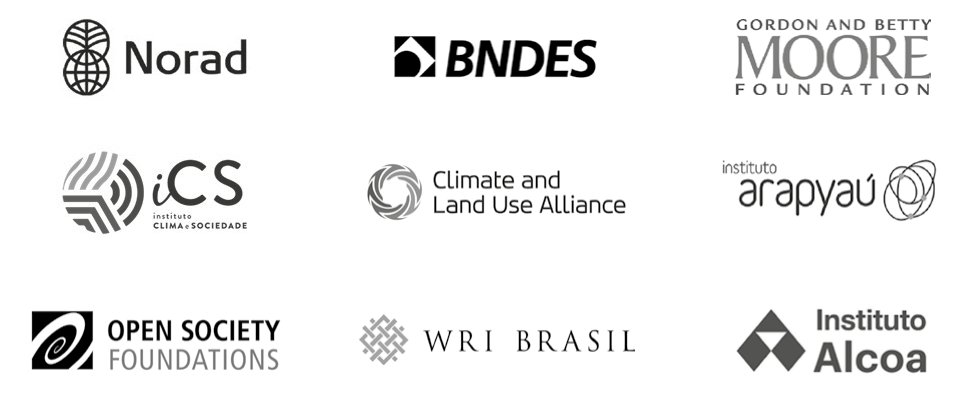


Download the Independent auditors’ report here

Books and booklets
Ten Essential Facts About Land Tenure Regularization in the Brazilian Amazon Grazing the Amazon: how the Amazon becomes pasture
Deforestation Alert Systems (SAD)
• Brazilian Amazon Deforestation Bulletin (December 2020)
• Brazilian Amazon Deforestation Bulletin (January 2021)
• Brazilian Amazon Deforestation Bulletin (February 2021)
• Brazilian Amazon Deforestation Bulletin (March 2021)
• Brazilian Amazon Deforestation Bulletin (April 2021)
• Brazilian Amazon Deforestation Bulletin (May 2021)
• Brazilian Amazon Deforestation Bulletin (June 2021)
• Brazilian Amazon Deforestation Bulletin (July 2021)
• Brazilian Amazon Deforestation Bulletin (August 2021)
• Brazilian Amazon Deforestation Bulletin (September 2021)
• Brazilian Amazon Deforestation Bulletin (October 2021)
• Brazilian Amazon Deforestation Bulletin (November 2021)
Threat and Pressure and Deforestation in Protected Areas
• Threat and Pressure and Deforestation in Protected Areas: SAD February to April 2021
• Deforestation Threat and Pressure in Protected Areas: SAD from August 2020 to July 2021
• Deforestation Threat and Pressure in Protected Areas: SAD August to October 2021
• Threat and Pressure and Deforestation in Protected Areas: SAD from November 2020 to January 2021
Timber Harvesting System (Simex)
• Timber Harvesting System (Simex): State of Pará 2018-2019
• Timber Harvesting System (Simex): Mapping of logging in the Amazon – August 2019 to July 2020
• Timber Harvesting System (Simex): Mapping logging in Acre – August 2019 to July 2020
• Timber Harvesting System (Simex): Mapping logging in Amapá – August 2019 to July 2020
• Timber Harvesting System (Simex): Mapping logging in Amazonas – August 2019 to July 2020
• Timber Harvesting System (Simex): Mapping of logging in Mato Grosso – August 2019 to July 2020
• Timber Harvesting System (Simex): Mapping logging in Pará – August 2019 to July 2020
• Timber Harvesting System (Simex): Mapping logging in Rondônia – August 2019 to July 2020
• Timber Harvesting System (Simex): Mapping logging in Roraima – August 2019 to July 2020
Laws and practices of land regularization
• Land regularization laws and practices in the State of Acre
• Land regularization laws and practices in Amapá State
• Land regularization laws and practices in the State of Amazonas
• Land regularization laws and practices in the State of Maranhão
• Land regularization laws and practices in the State of Mato Grosso
• Land regularization laws and practices in the State of Pará
• Land regularization laws and practices in the State of Rondônia
• Land regularization laws and practices in the State of Roraima
• Land regularization laws and practices in the State of Tocantins
Social Progress Index (IPS) for the Brazilian Amazon
• Index of Social Progress in the Brazilian Amazon – IPS Amazônia 2021
• Index of Social Progress in the Brazilian Amazon – IPS Acre 2021
• Index of Social Progress in the Brazilian Amazon – IPS Amapá 2021
• Social Progress Index in the Brazilian Amazon – IPS Amazonas 2021
• Index of Social Progress in the Brazilian Amazon – IPS Maranhão 2021
• Social Progress Index in the Brazilian Amazon – IPS Mato Grosso 2021
• Index of Social Progress in the Brazilian Amazon – IPS Pará 2021
• Index of Social Progress in the Brazilian Amazon – IPS Rondônia 2021
• Index of Social Progress in the Brazilian Amazon – IPS Roraima 2021
• Social Progress Index in the Brazilian Amazon – IPS Tocantins 2021
Research within the Amazônia 2030 project 45
• Amazon Facts 2021
• Brazilian land legislation encourages land-grabbing and deforestation in the Amazon.
• Large-scale forest restoration in the Amazon: the potential of secondary vegetation
• Policies to develop cattle ranching in the Amazon without deforestation
Research within the MapBiomas Network
• Annual mapping of land cover and land use in Brazil (1985 – 2020) – Amazon Highlights
• Amazon – Annual Evolution of land cover and land use (1985-2020)
• The dynamics of the water surface of the Brazilian territory: Main results of the annual and monthly mapping of the water surface in Brazil from 1985 to 2020
• Water in Brazil 1985 – 2020
• Annual Report on Deforestation in Brazil 2020
• Annual Report on Deforestation in Brazil 2020 – Main results of the report on deforestation in all biomes in the country in 2020 produced by the MapBiomas project
Research in international journals
• Extensive Production Practices and Incomplete Implementation Hinder Brazil’s Zero-Deforestation Cattle Agreements in Pará
Other research
• Debating the Amazônia Agora State Plan from the point of view of Civil Society and Academia
• Map of the Protected Areas of Northern Pará – 2nd edition
Technical notes and documents
• Technical Note on Bill 510/2021
• Evaluation of the report by Senator Carlos Favaro on land title regularization bills
• Understanding the Timber Harvesting System (Simex)
• Understanding the Deforestation Alert System (SAD)

General Assembly
Adalberto Veríssimo
Associate Researcher at Imazon
Christopher Uhl
Professor at Pennsylvania State University-USA
Cândido Paraguassu
Lawyer and Professor at the University of Amazonia (Unama)
Carlos Souza Jr.
Associate Researcher at Imazon
David MacGrath
Earth Innovation Institute Researcher
Paulo Amaral
Associate Researcher at Imazon
Paulo Barreto
Associate Researcher at Imazon
Board of Directors
André Guimarães
President of the Board of Directors of Imazon and Executive Director of the Amazon Environmental Research Institute (Ipam)
Maria José Gontijo
Vice-President of the Board of Directors of Imazon Executive Director of the International Institute of Education of Brazil (IEB)
Claudia Azevedo Ramos
Full Professor. NAEA – Center for Higher Amazonian Studies – Federal University of Pará (UFPA)
Pedro Moura Costa
Executive President of BVRio
Estevão Ciavatta
Film and TV director, screenwriter and producer
Salo Vinocur Coslovsky
Associate Professor of Urban Planning and Public Service at New York University (NYU)
Suzana Padua
President of the Ecological Research Institute (IPÊ)
Audit Committee
Carlos Antonio Rocha Vicente
Forest Engineer
Edson Vidal
Professor at the School of Agriculture “Luiz de Queiroz” (Esalq) at the University of São Paulo (USP)
Luciana Costa da Fonseca
PhD in Law, coordinator of the Specialization Course in Environmental Law at the Pará University Center and professor at the Higher School of Law of the OAB- PA (Pará State Bar Association)
Ubiratan Cazetta
Federal Attorney in Pará
Team
Researchers
Adalberto Veríssimo
Brenda Brito
Carlos Souza Jr.
Paulo Amaral
Paulo Barreto
Associate Researchers
Andréia Pinto
Ritaumaria Pereira
Assistant Researchers II
Antonio Victor Galvão da Fonseca
Dalton Raphael Ruy Secco Cardoso
Jakeline Ramos Pereira
Luis Augusto Lima Oliveira Junior
Assistant Researchers I
Jeferson Almeida de Oliveira
Larissa Sousa Villas Boas Amorim
Regiane Souza Vilanova
Stefany Pinheiro
Analysts III
Camila Trigueiro
Analysts II
Carlos Alexandre Ribeiro da Cunha
Jailson Filho
Julia Gabriela Ferreira Ribeiro
Analyst I
Ana Caroline Souza
Technician
Lucas Nascimento Figueiredo
Trainees
Alexandra Paiva
Arthur Rocha
Bianca Nunes
Bruno Ferreira
Hannah Farias
Raíssa Ferreira
Controllership
Veronica Oki Igacihalaguti
Managers
Fabiany Ferreira Lucidos (Financial)
Wanessa Ferreira (HR)
Coordinator
Fernanda da Costa (Communication)
Assistants
Flavia Colares Valle Alves (Financial)
Helton Paulo Rodrigues de Souza (Information Technology)
Jusceane da Silva Alencar (Administrative)
Rita de Cássia Neves Oliveira Santana (Accounting)
Auxiliaries
Rosa Pinheiro da Silva (General Services)
Interns
Camila Damasceno
Ives Brandão
Lorena de Fátima Amaral Esteves
Manoela Dias

